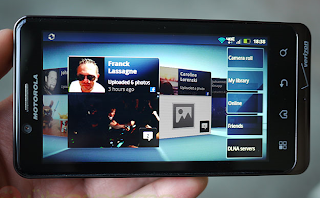Google Maps By Motorola Droid Bionic (awesome): As of late, I found the mapping experience to be much better on Android devices, and that certainly has to do with the fact that Google Maps Motorola Droid Bionic has been improving its mapping application on its own platform, while leaving other mobile OSes in the cold. It’s not a bad tactic to gain an edge, and the net result is that Android users have been getting steady improvements, while others have mostly stagnated.
First, Google Maps Motorola Droid Bionic Android users get free turn-by-turn navigation. This is a big deal as this feature can cost quite a bit of money on other platforms. Secondly, new features like “download map area” are introduced on a regular basis. This one is supposed to let you preload an area the size of a city, this is really cool. Here’s how to enable it:
Read more
First, Google Maps Motorola Droid Bionic Android users get free turn-by-turn navigation. This is a big deal as this feature can cost quite a bit of money on other platforms. Secondly, new features like “download map area” are introduced on a regular basis. This one is supposed to let you preload an area the size of a city, this is really cool. Here’s how to enable it:





